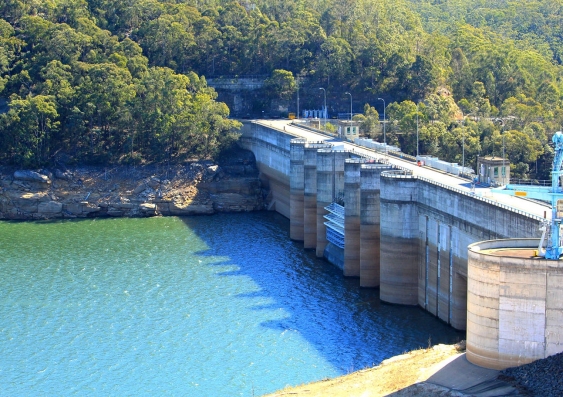Earlier this year, New South Wales and Queensland experienced once-in-a-century floods across both states, as extensive rainfall caused damage to property, infrastructure and even claimed human life.
The northern NSW town of Lismore saw 400mm of rain in 24 hours which left homes and buildings completely submerged under water and forced communities to evacuate.
While populations around the globe have dealt with the effect of floods for millennia, climate change is bringing bigger and more extreme storms – causing larger flood events.
Engineering hydrologist, Professor Ashish Sharma from UNSW Sydney’s School of Civil and Environmental Engineering, says the problem is due to the fact the climate is changing faster than plans to tackle the issue.
“A lot has changed in the last 50 years. We have had significant changes in our climate, but the flood infrastructure and warning systems haven’t caught up yet,” he says.
“They have been put in place to expect little to no change – as it used to be in the previous 10, 20, or 30 years.
“A lot of the infrastructure needs to be redesigned, which will be costly, but the long-term benefits for the next generation are clear. If not, we’re just going to be faced with the same problem over again.
‘‘And this has been echoed in the Federal election as well, which seems to suggest some specific populations are screaming for more support in terms of flood resilience and recovery.
“We can’t control what comes down from the sky. But once it touches ground, it’s in our control – and floods happen because we didn’t control it early enough.”
Lessons learnt from recent floods
It’s hard to forget the images of cars floating down roads as rising floodwaters left people stranded on their rooftops.
In Australia, floods are considered to be the most expensive natural disaster – with most forms of flooding occurring along rivers after heavy rainfall.
However, Prof. Sharma says minimising the risk of flooding can be achieved by improving current forecasting systems and the design of infrastructure.
“The first line of defence is to improve the systems that feed the flood forecast modelling and issue warnings, so that we receive them much further in advance.
“If we know about the possible weather events sooner, we can act quicker.
“Similarly, a lot of our infrastructure, such as dams and levees, needs to be redesigned because the floods they’re supposed to be protecting us from are not the same as they were when they were built.”
Prof. Sharma says nature-based solutions, such as green infrastructure, make a difference in our defence against flooding.
“Simple solutions such as green pavements and surfaces might not reduce the impact of a severe flooding event, like the one we had recently, but it can act as a buffer for the smaller flooding events that impact livelihoods.”

Warragamba Dam is the primary reservoir for water supply for the city of Sydney. When the dam reaches full capacity during periods of heavy rainfall, water is released and flows down the Warragamba River into the Hawkesbury-Nepean River.
Two sides of the story
A UNSW study in 2019 found that global water supplies are shrinking, even as rainfall is intensifying – and the culprit is the drying of soil.
It’s important to recognise these changes in climate are causing two different types of flood impacts, says Prof. Sharma.
“On one end we are seeing much more extreme floods and our old infrastructure, which has been designed on the assumption the floods would be the same size as they were many years ago, can’t cope with it,” he says.
“At the same time, we are also experiencing higher temperatures which causes greater evaporation and as a result, we are seeing drier soils.
“So, on the other end, we are also seeing smaller floods from less extreme rainfalls because the storms are falling on drier soil.
“These catchments were more moist before a storm event – allowing excess rainfall to run off into rivers – they are now drier and soak up more of the rain, so less water makes it as flow. While these less extreme storms create a smaller flood event, it also creates water insecurity as it is such frequent floods that fill our dams.
“It’s a two-fold change.”
More money, fewer problems
Australia is no little fish in the water space. But despite being a global leader in water resources and management, Prof. Sharma says the nation is lagging in research support.
He believes there is a false perception that the field is overflowing with resources.
“Flood and water infrastructure are the biggest and the costliest infrastructure assets we have on the planet,” he says.
“If you count the number of water supply systems, water distribution systems, levees, canals, desalination plants, urban distribution systems on this planet, it will show that we spend most of our money to ensure two things: sufficient water supply and safety from flooding.
“Despite this, research support is close to negligible. There is this false perception that we have the right infrastructure in place and there is no need to do any more research in this area.
“In a country that is facing natural disaster after natural disaster, year after year, it’s clear we need well thought out solutions to mitigate the impact of the next disaster.
“We need the Government to back the research and legislate the solutions because ultimately it’s the community who suffers unless better flood management practices are enforced.”
















